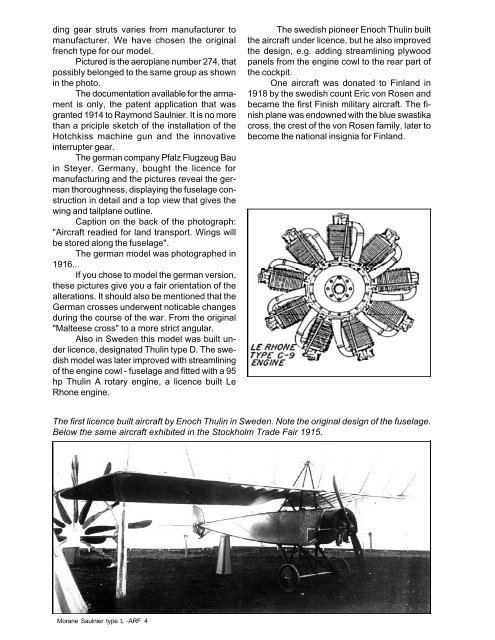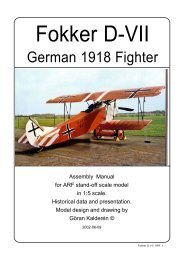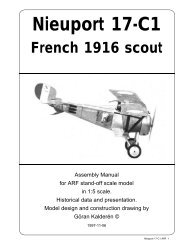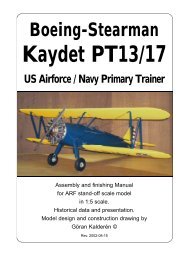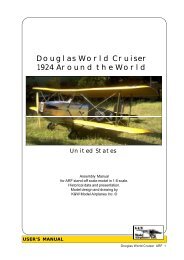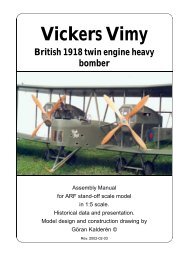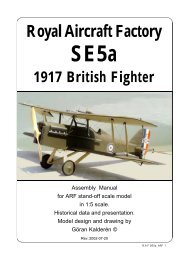Download PDF Manual - Macca's Vintage Aerodrome
Download PDF Manual - Macca's Vintage Aerodrome
Download PDF Manual - Macca's Vintage Aerodrome
Create successful ePaper yourself
Turn your PDF publications into a flip-book with our unique Google optimized e-Paper software.
ding gear struts varies from manufacturer to<br />
manufacturer. We have chosen the original<br />
french type for our model.<br />
Pictured is the aeroplane number 274, that<br />
possibly belonged to the same group as shown<br />
in the photo.<br />
The documentation available for the armament<br />
is only, the patent application that was<br />
granted 1914 to Raymond Saulnier. It is no more<br />
than a priciple sketch of the installation of the<br />
Hotchkiss machine gun and the innovative<br />
interrupter gear.<br />
The german company Pfalz Flugzeug Bau<br />
in Steyer, Germany, bought the licence for<br />
manufacturing and the pictures reveal the german<br />
thoroughness, displaying the fuselage construction<br />
in detail and a top view that gives the<br />
wing and tailplane outline.<br />
Caption on the back of the photograph:<br />
"Aircraft readied for land transport. Wings will<br />
be stored along the fuselage".<br />
The german model was photographed in<br />
1916...<br />
If you chose to model the german version,<br />
these pictures give you a fair orientation of the<br />
alterations. It should also be mentioned that the<br />
German crosses underwent noticable changes<br />
during the course of the war. From the original<br />
"Malteese cross" to a more strict angular.<br />
Also in Sweden this model was built under<br />
licence, designated Thulin type D. The swedish<br />
model was later improved with streamlining<br />
of the engine cowl - fuselage and fitted with a 95<br />
hp Thulin A rotary engine, a licence built Le<br />
Rhone engine.<br />
The swedish pioneer Enoch Thulin built<br />
the aircraft under licence, but he also improved<br />
the design, e.g. adding streamlining plywood<br />
panels from the engine cowl to the rear part of<br />
the cockpit.<br />
One aircraft was donated to Finland in<br />
1918 by the swedish count Eric von Rosen and<br />
became the first Finish military aircraft. The finish<br />
plane was endowned with the blue swastika<br />
cross, the crest of the von Rosen family, later to<br />
become the national insignia for Finland.<br />
The first licence built aircraft by Enoch Thulin in Sweden. Note the original design of the fuselage.<br />
Below the same aircraft exhibited in the Stockholm Trade Fair 1915.<br />
Morane Saulnier type L -ARF 4


